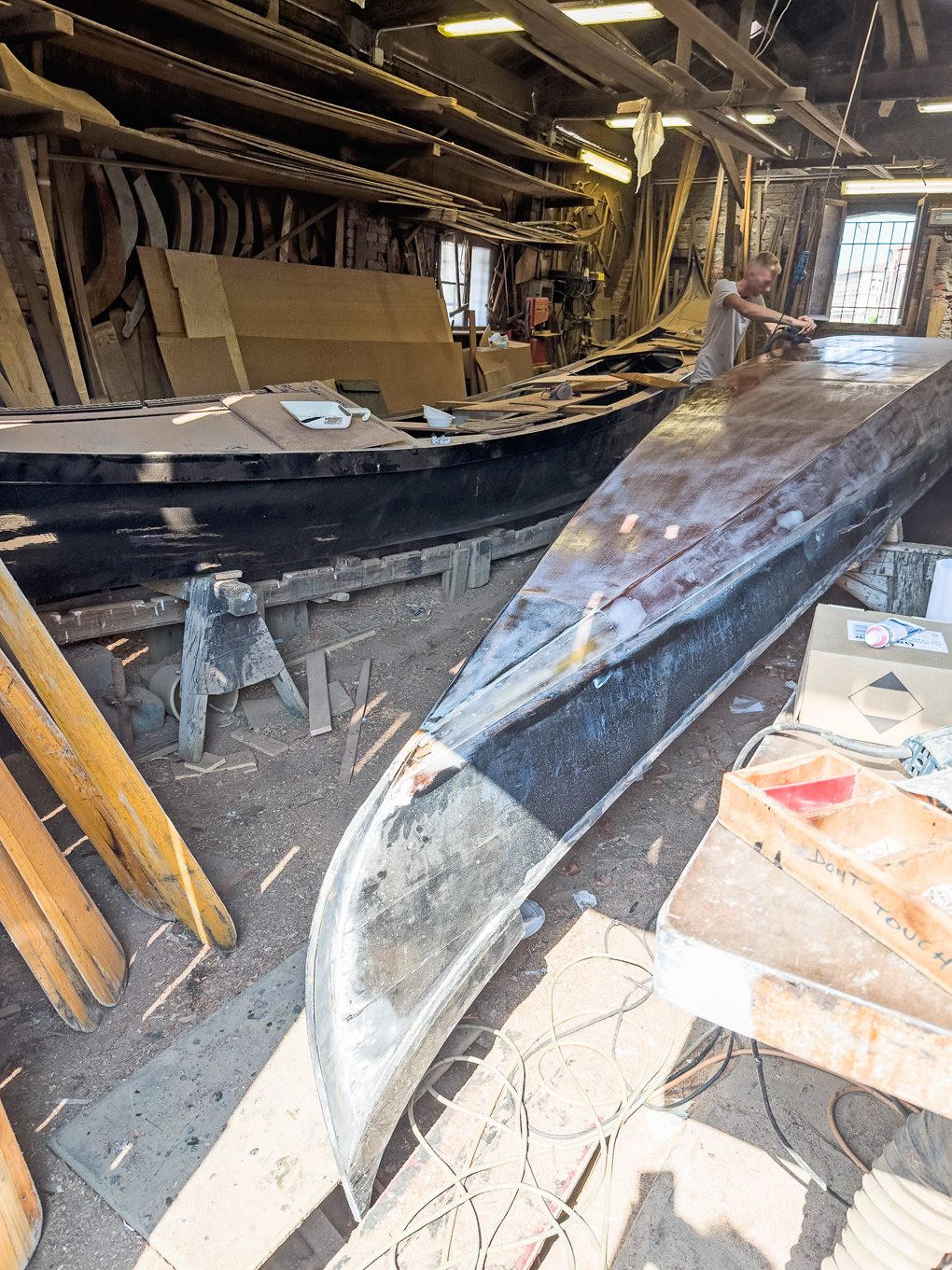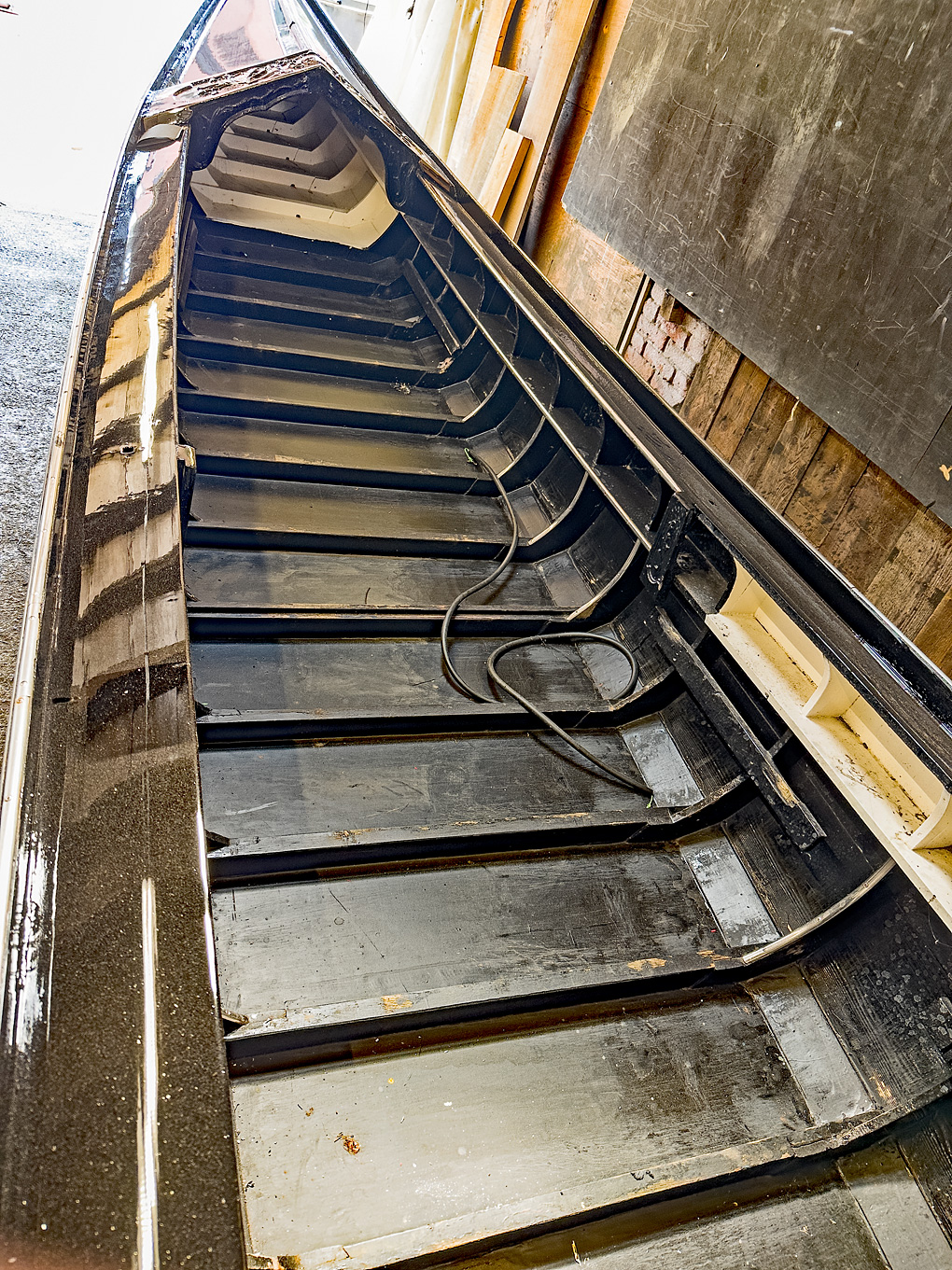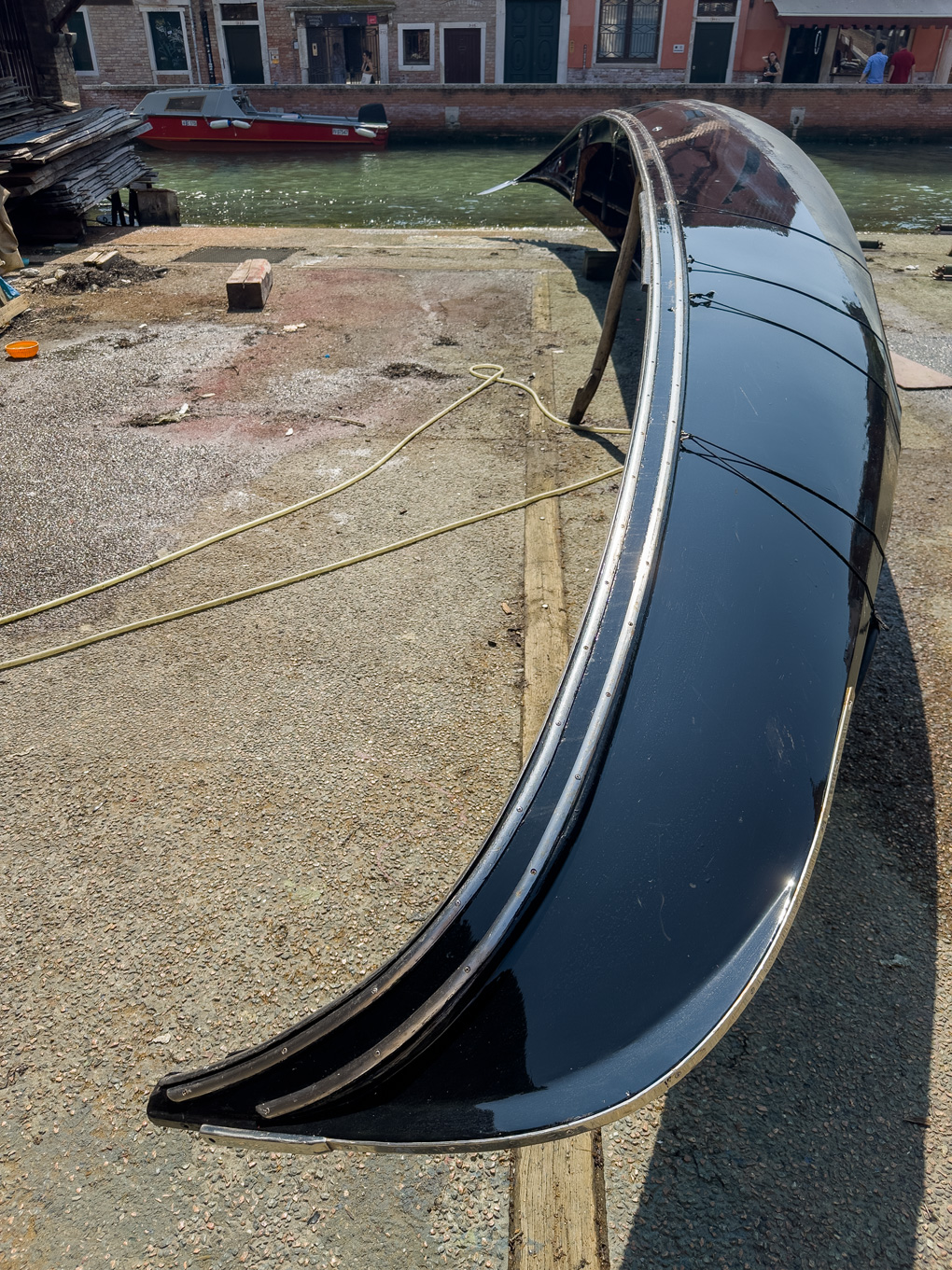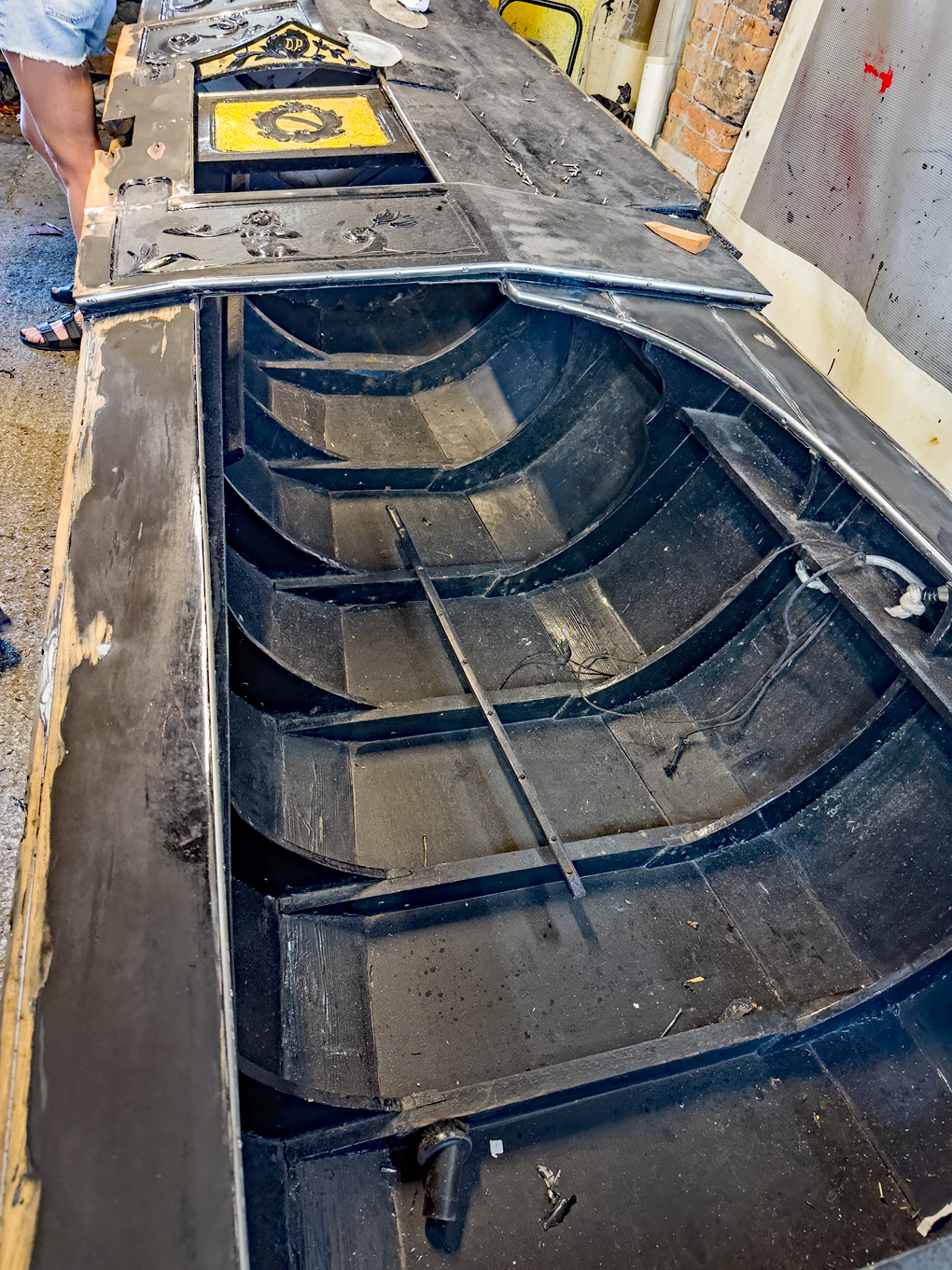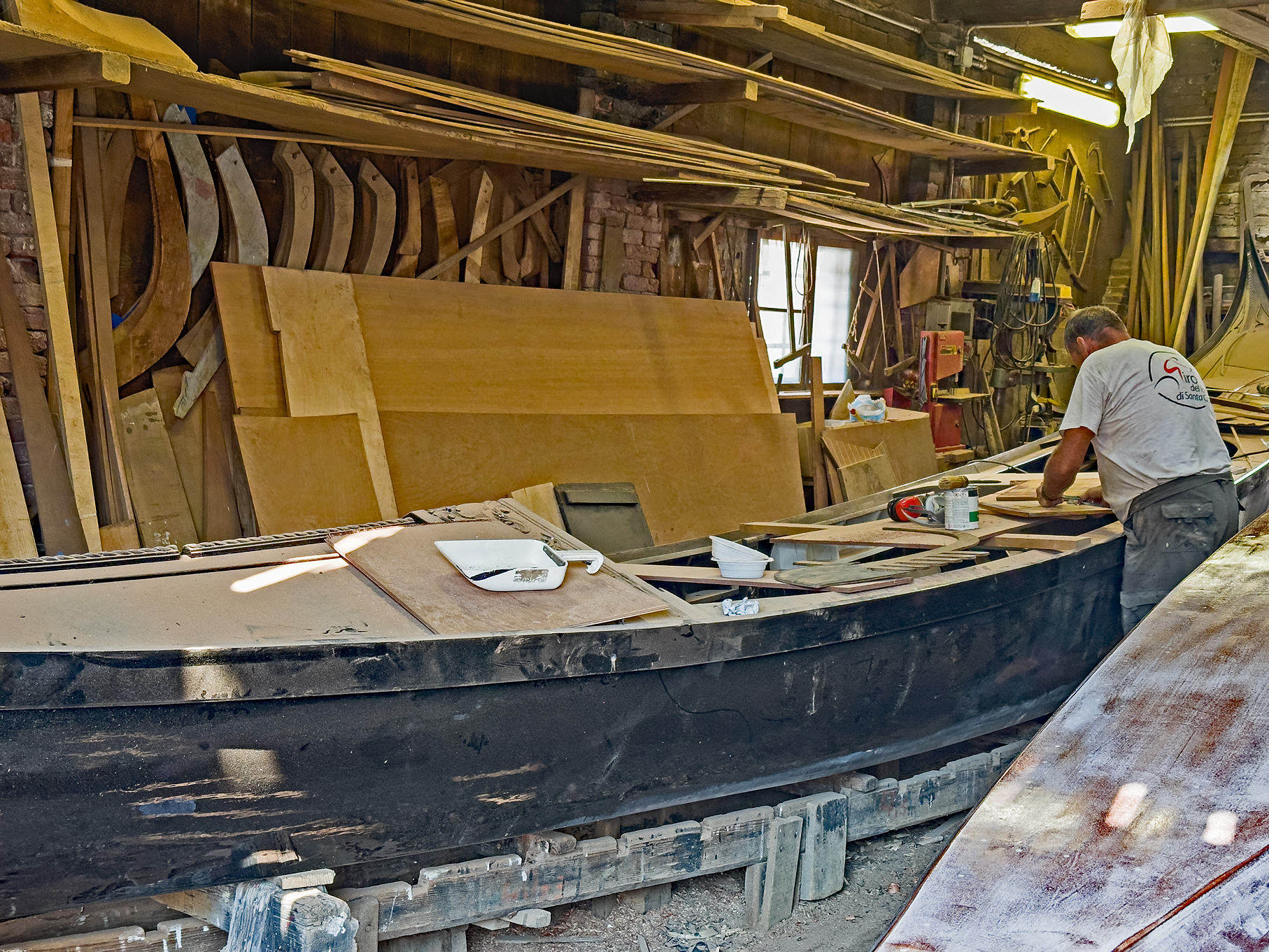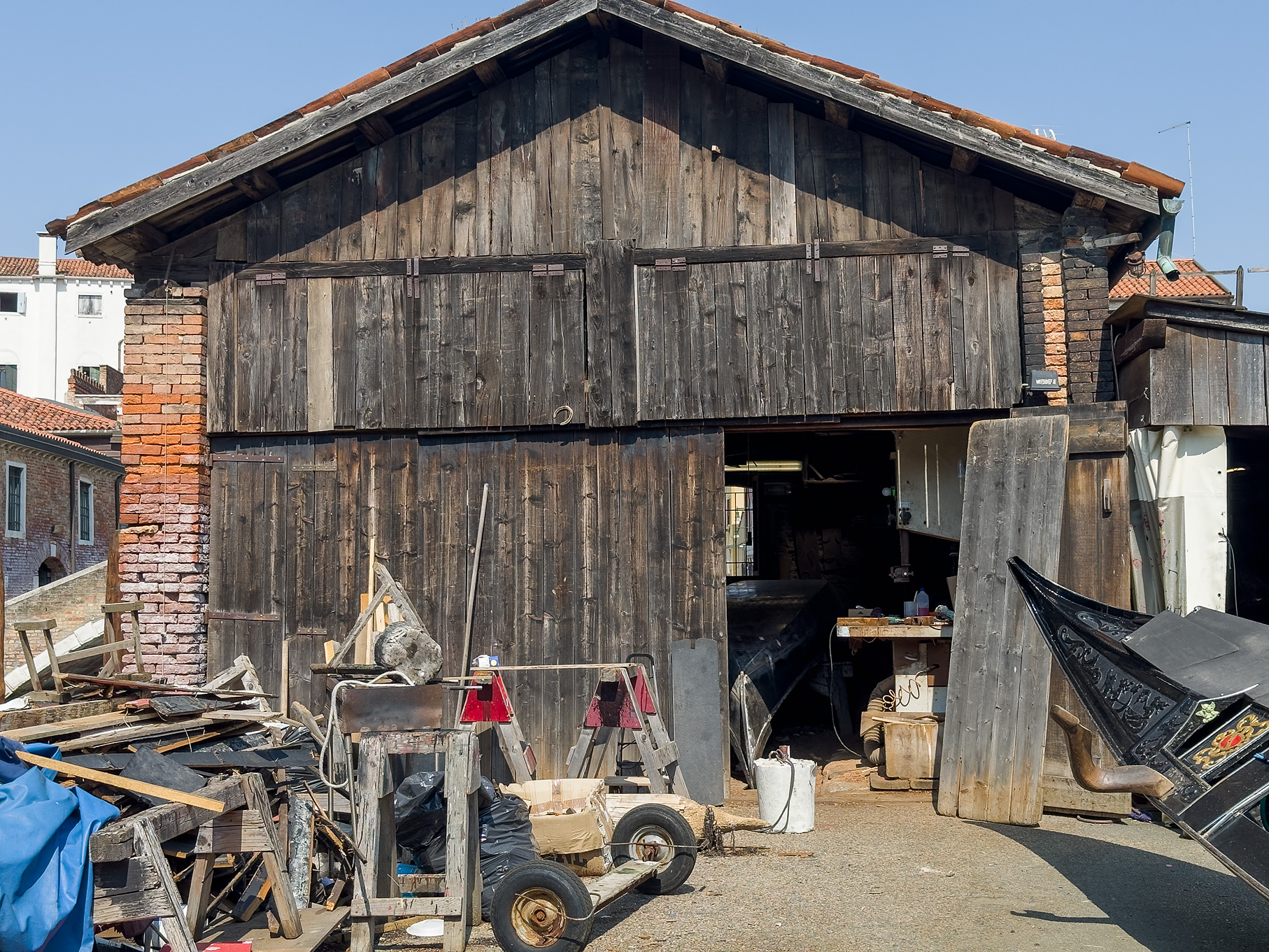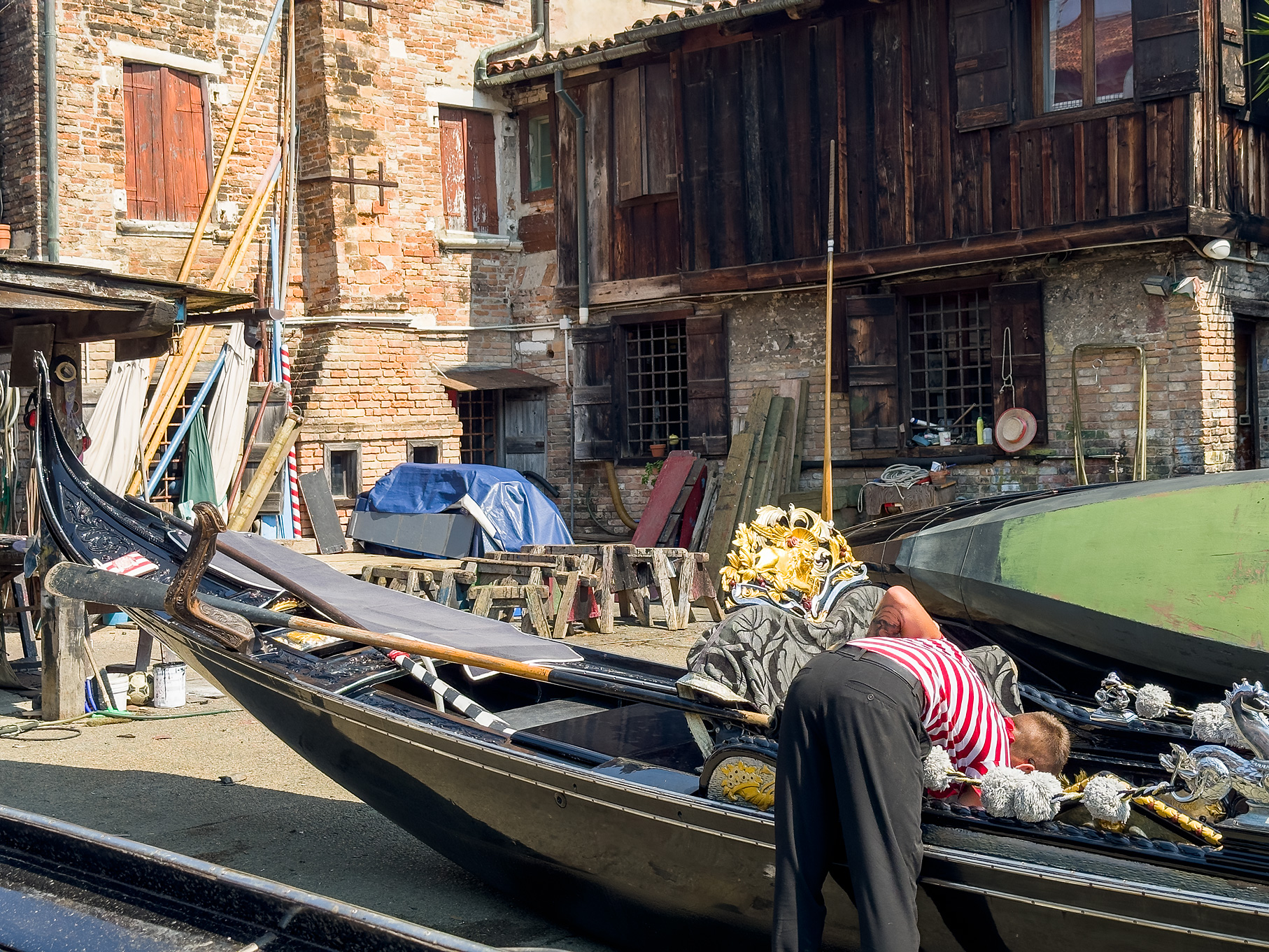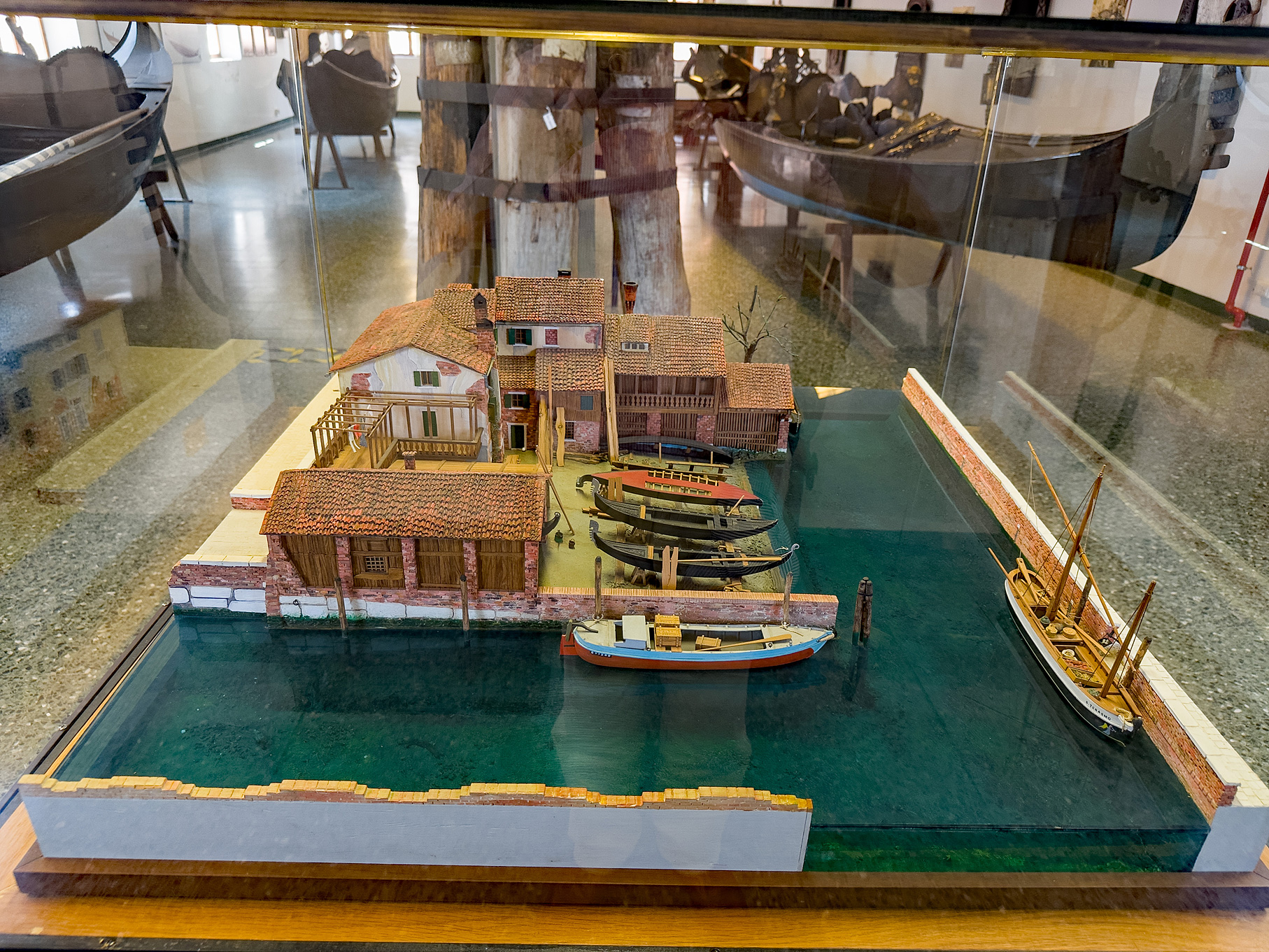 |
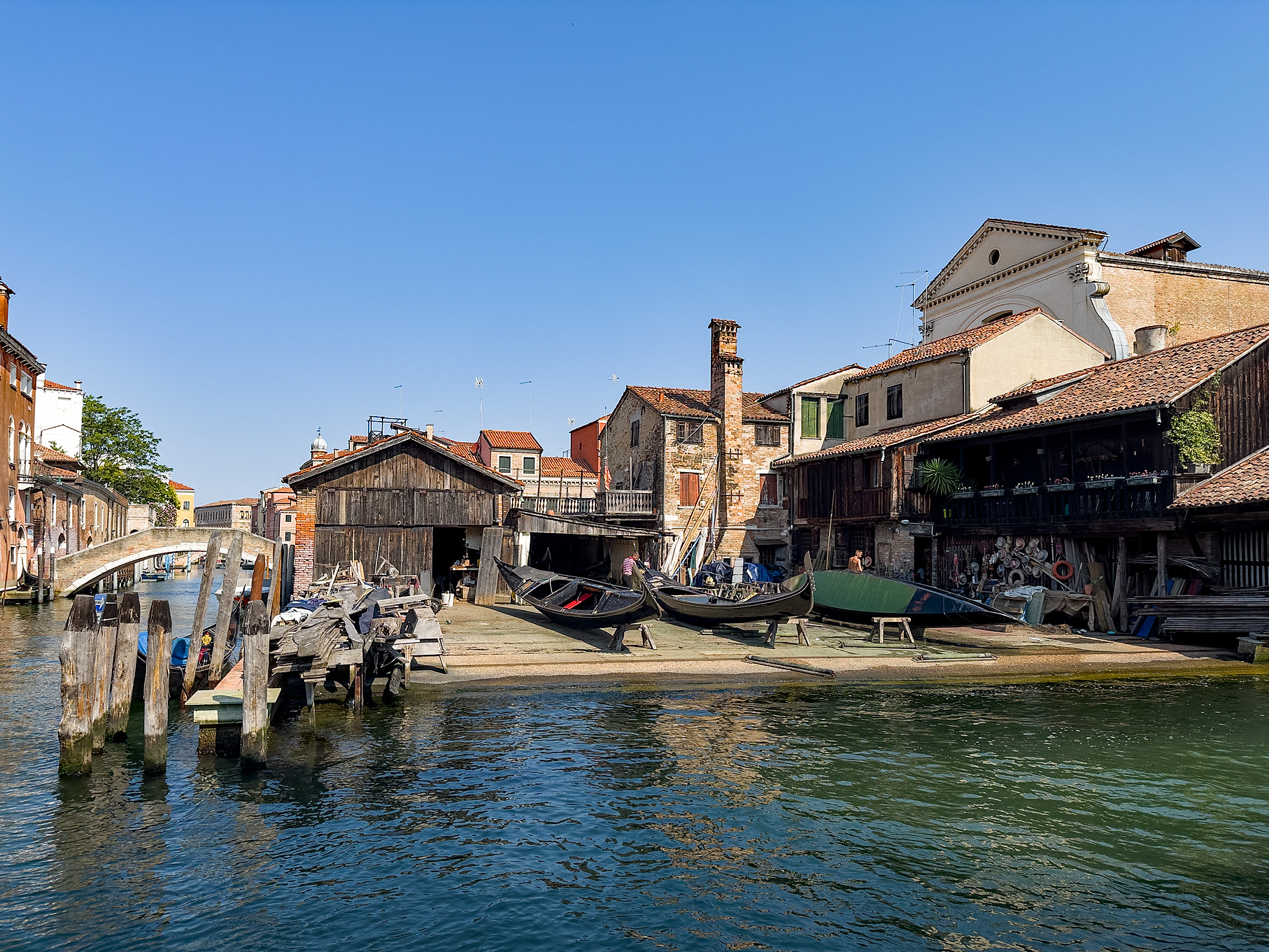 |
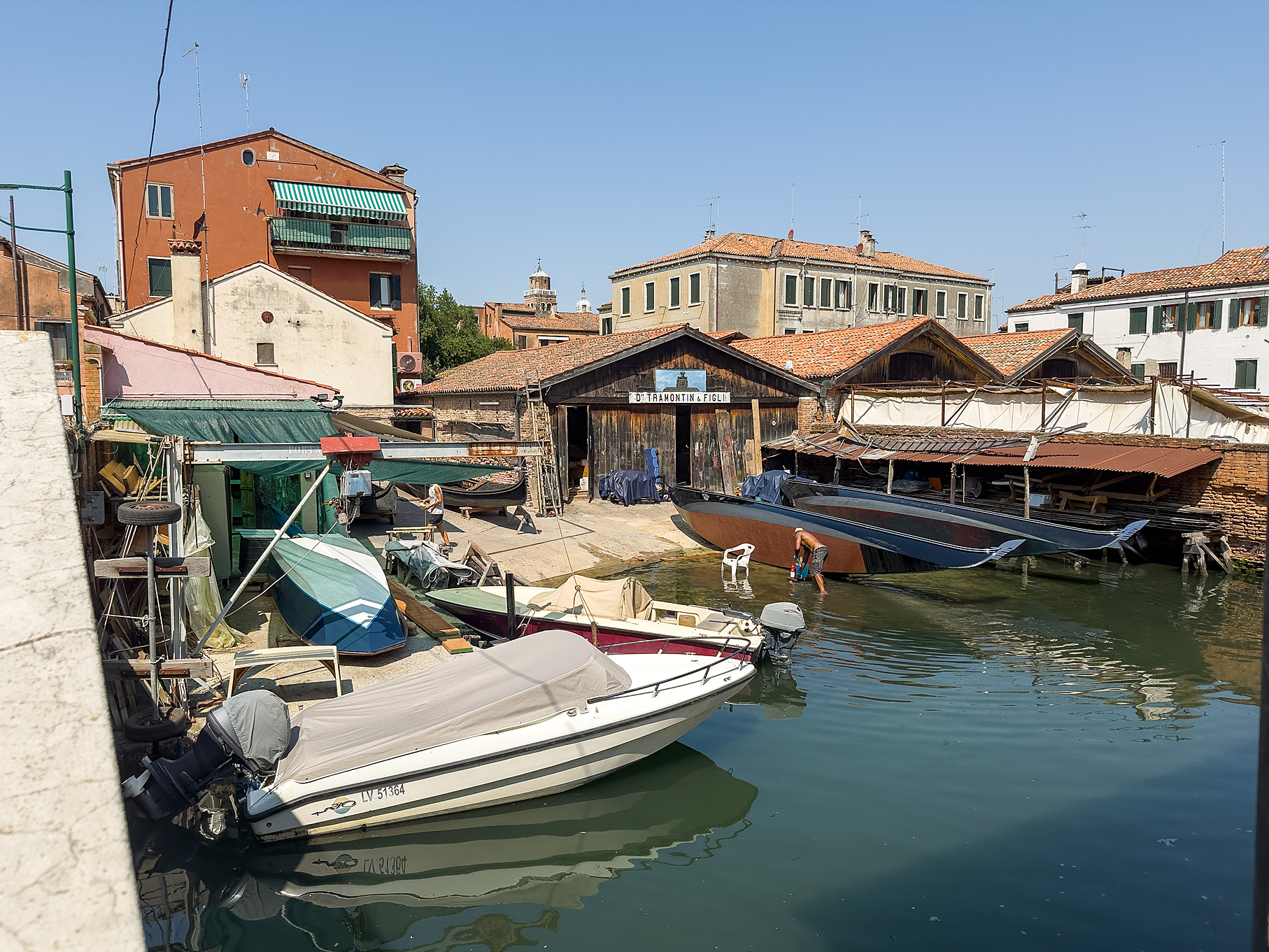 |
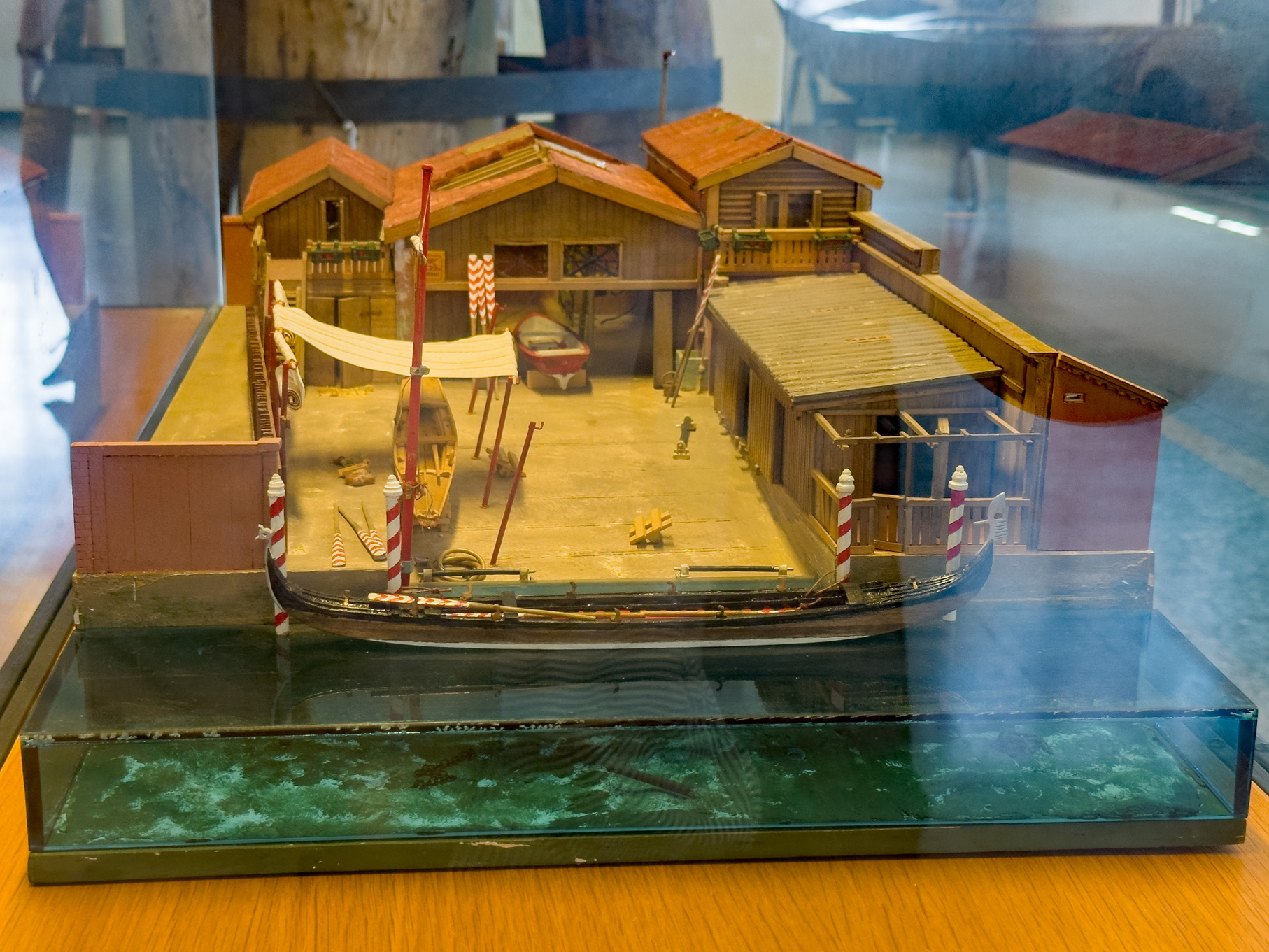 |
| Model of
the Squero San Trovaso in the Museo Storico Navale |
Squero San
Trovaso |
Squero
Tramontin i figli |
Model of
the Squero Tramontin in the Museo Storico Navale |
A major overhaul
takes several weeks. The paint is scraped
down to the wood, the deck is removed to
access all the wood inlays, and damaged
parts are replaced. Over a dozen types of
wood are used to build a gondola,
depending on the properties required of
the wood. Plywood is increasingly used for
the floor planks because it is becoming
difficult to obtain planks of suitable
size and thickness. Due to intensive use
for tourism, today's gondolas are fitted
with semi-circular steel protective rails,
which may also need to be replaced. The
decks (which are not walked on) are often
decorated with carvings, while the
bulkhead towards the forepeak is either
also carved or painted. All of these parts
are naturally subject to wear and
weathering. Various tasks, such as the
manufacture of the ferri, the
characteristic stem decorations, and the
forcole, the oar forks, are carried out by
specialist workshops. During my visit to
the Squero San Trovaso, there was not a
single new gondola in storage; only two
gondolas were being overhauled in the boat
building shed, while several were lying on
the sloping ground in front of it for
cleaning.
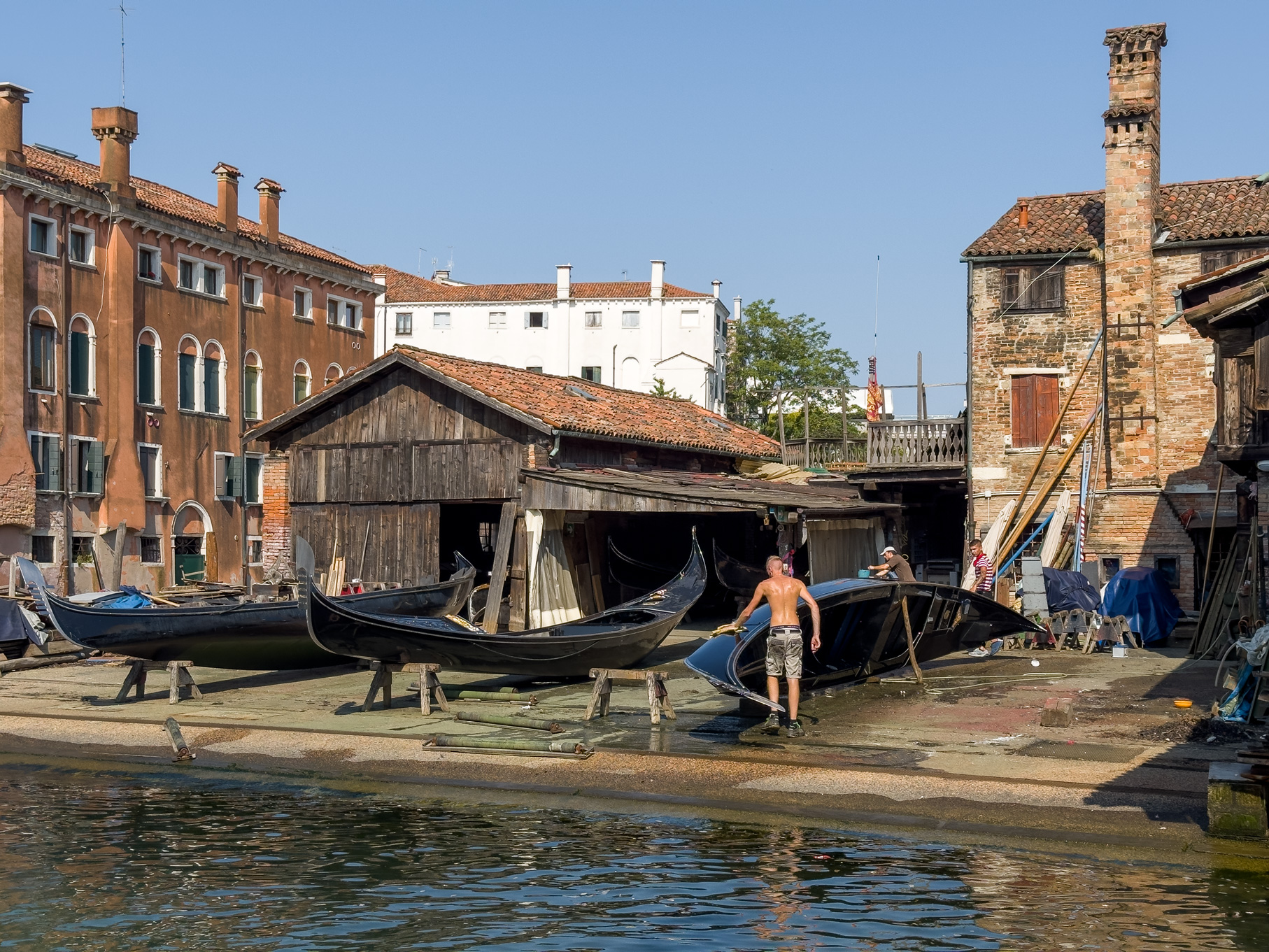 |
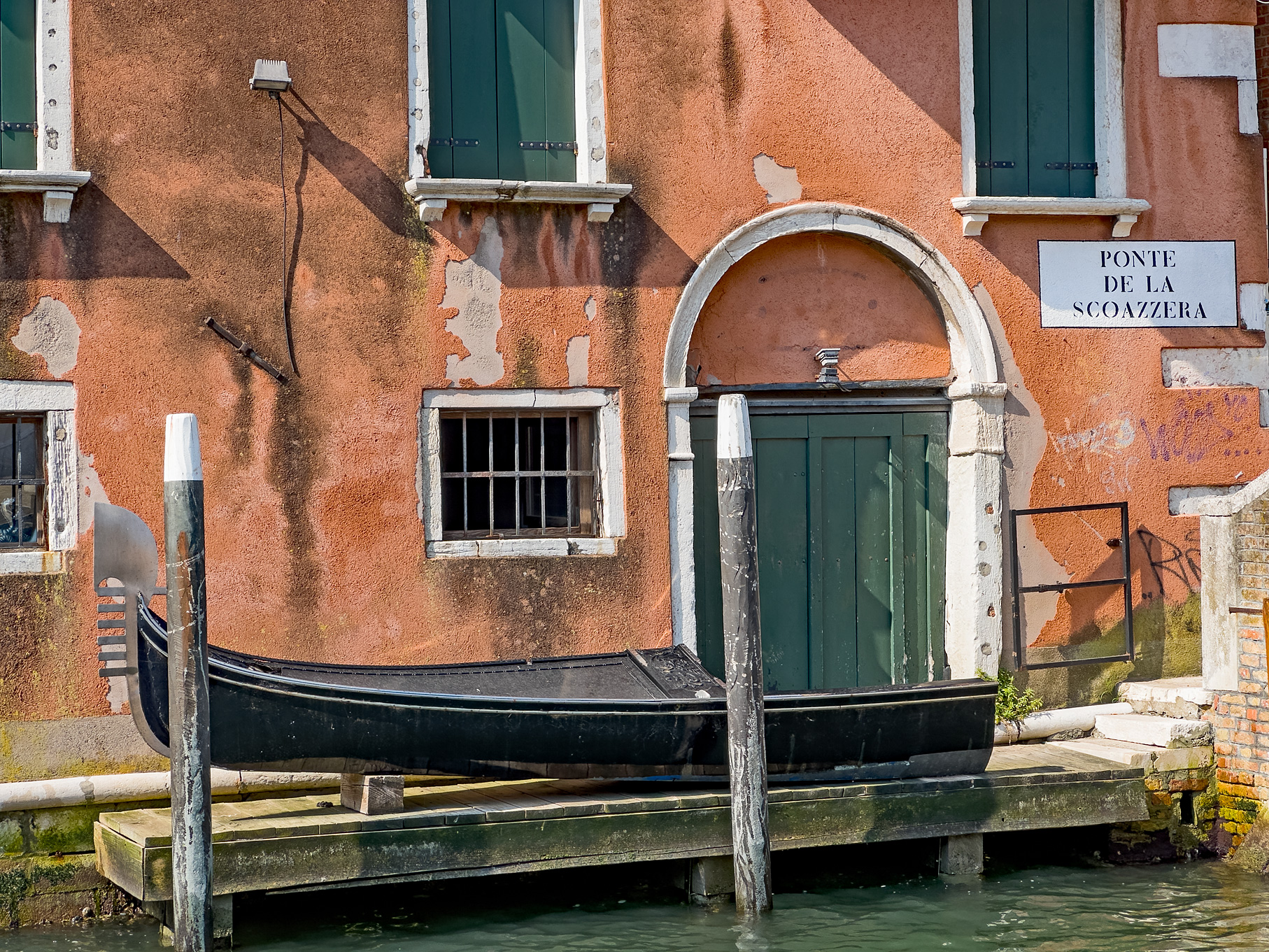 |
 |
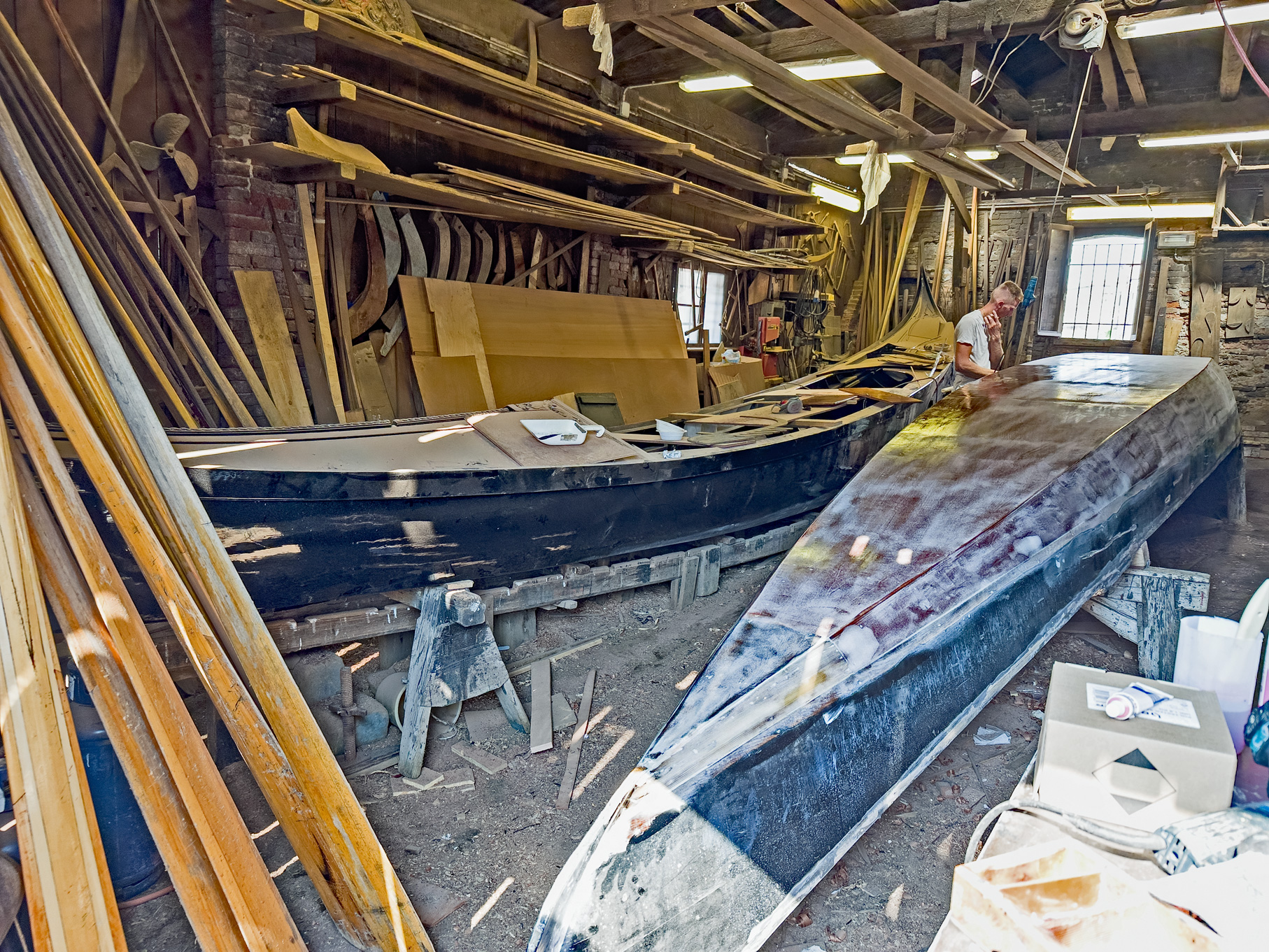 |
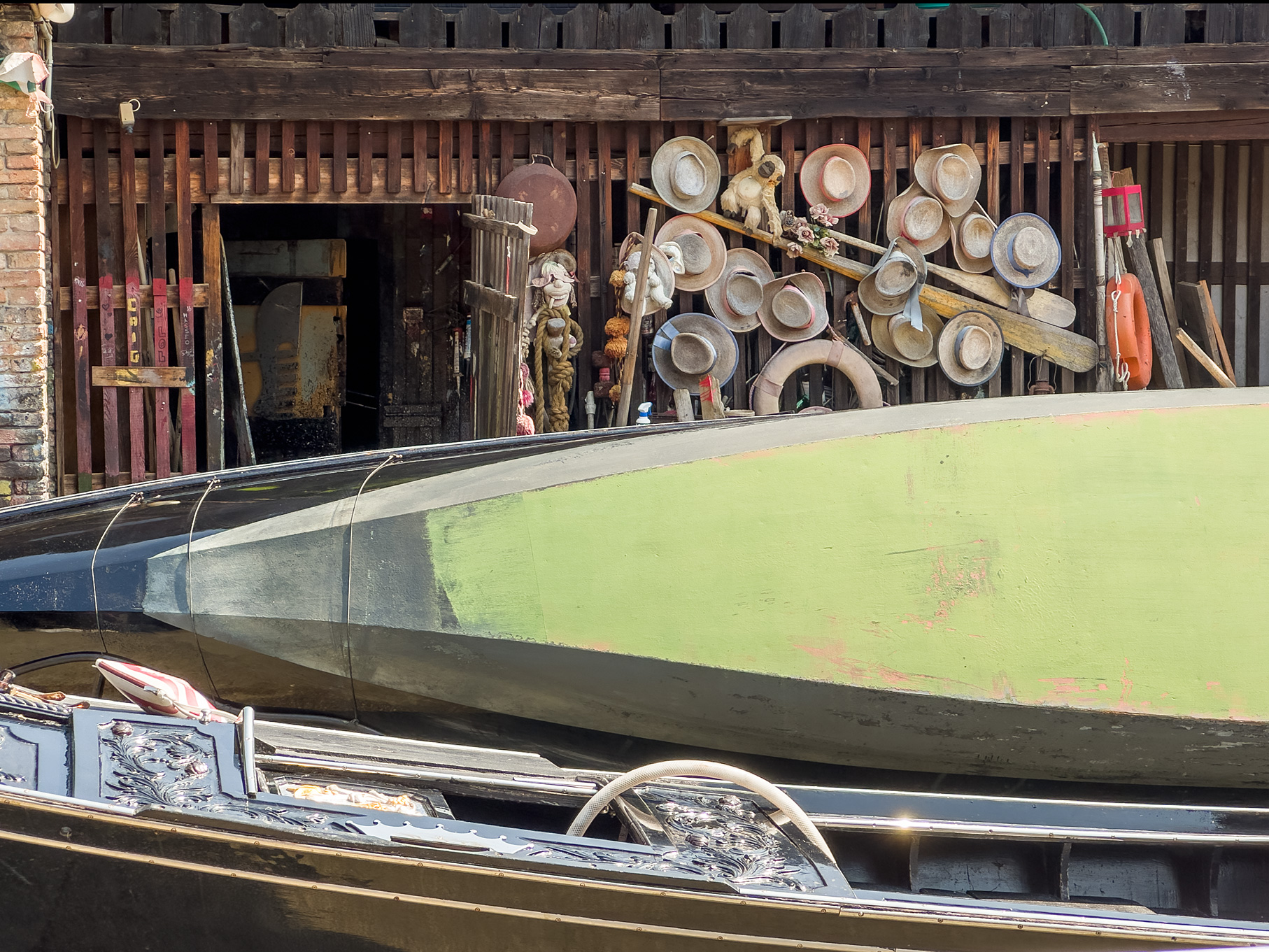 |
| Squero San
Trovaso |
Half a gondola
... |
... and the
other half |
View of the
boatbuilding shed |
Cleaning work |
Squero is actually
the name for a team
of woodworkers, the
squerariòli, from
the Alps, who
brought the wood,
for example, across
the Piave to Venice
and carried out
carpentry work
there. Some settled
there and became
boat builders. The
squero is a sloping
piece of land on
which the boat
building sheds, the
residential building
and a work shed on
the side were built
in an L shape. The
living quarters were
originally on the
first floor of the
two-storey
buildings. The
workshop buildings
are actually pretty
much the only
buildings in Venice
for which wooden
construction was
tolerated, as stone
construction had
otherwise been
required for
centuries due to the
fire hazard.
The
Squeri are
traditionally family
businesses. In San
Trovaso, the father
and son are boat
builders, while the
daughter does the
accounting and shows
tourists around.
Tramontin has
experienced a change
of ownership in
recent years, and
the two daughters of
the last Tramontin
have apparently sold
the shipyard.
In recent decades, numerous publications have been published on the construction and history of the gondola and other typical boats and ships of the Venetian lagoon. An overview of the literature can be found at https://www.maritima-et-mechanika.org/maritime/venezia/museonavalevenezia-2.html.
In recent decades, numerous publications have been published on the construction and history of the gondola and other typical boats and ships of the Venetian lagoon. An overview of the literature can be found at https://www.maritima-et-mechanika.org/maritime/venezia/museonavalevenezia-2.html.
